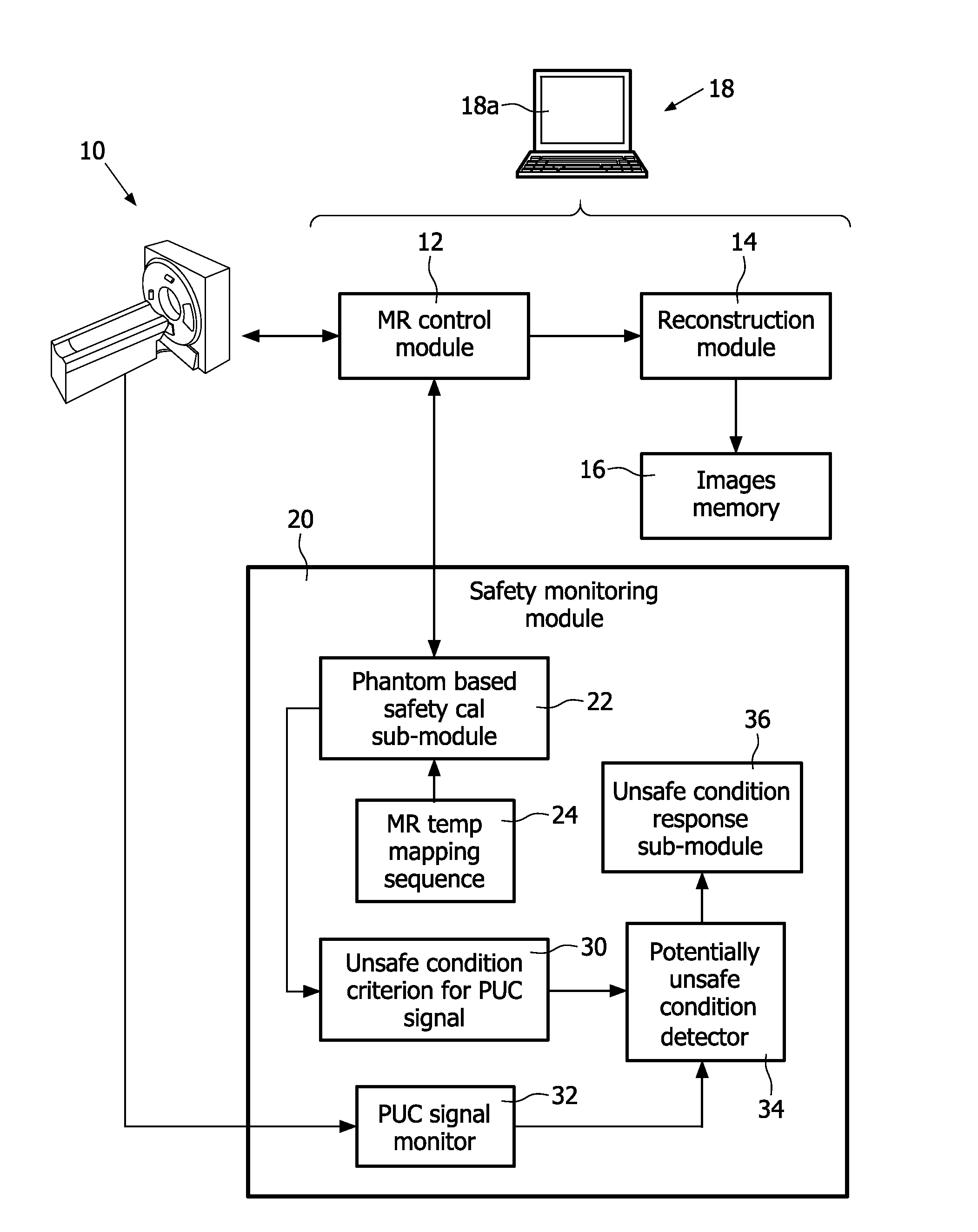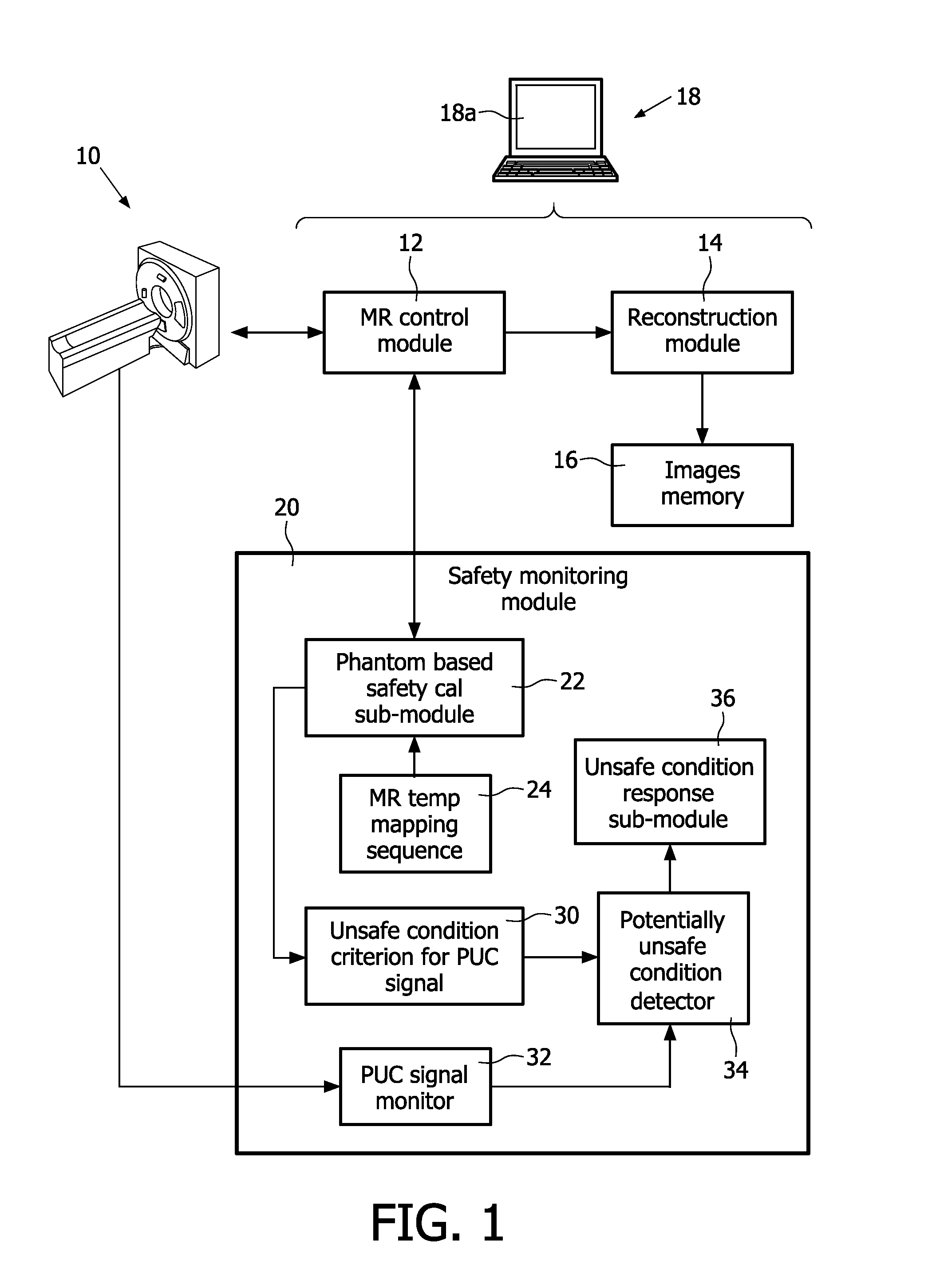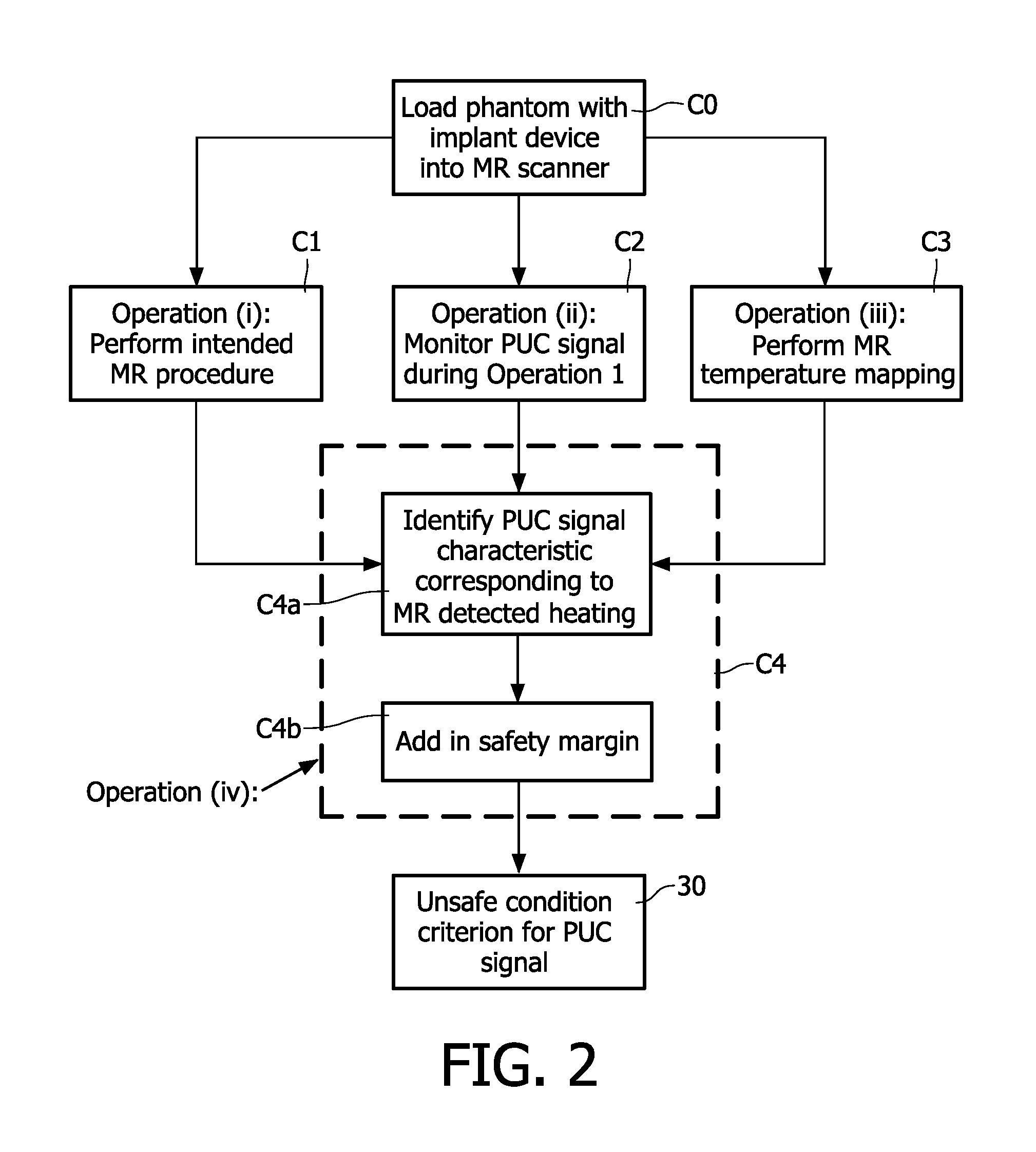Magnetic resonance system and method for comprehensive implantable device safety tests and patient safety monitoring
a magnetic resonance and comprehensive technology, applied in the field of magnetic resonance imaging and spectroscopy, can solve the problems of not being safe for mr imaging, difficult to determine whether or not the implant device is compatible with a given mr sequence, and diagnostic or clinical application of magnetic resonance, so as to reduce the likelihood of missing localized heating and rapid assessment
- Summary
- Abstract
- Description
- Claims
- Application Information
AI Technical Summary
Benefits of technology
Problems solved by technology
Method used
Image
Examples
Embodiment Construction
[0020]With reference to FIG. 1, a magnetic resonance system includes a magnetic resonance scanner 10, such as an illustrated Achieva™ magnetic resonance scanner (available from Koninklijke Philips Electronics N.V., Eindhoven, The Netherlands), or an Intera™ or Panorama™ magnetic resonance scanner (both also available from Koninklijke Philips Electronics N.V.), or another commercially available magnetic resonance scanner, or a non-commercial magnetic resonance scanner, or so forth. In a typical embodiment, the magnetic resonance scanner includes internal components (not illustrated) such as a superconducting or resistive main magnet generating a static (Bo) magnetic field, sets of magnetic field gradient coil windings for superimposing selected magnetic field gradients on the static magnetic field, a radio frequency excitation system for generating a radiofrequency (B1) field at a frequency selected to excite magnetic resonance (typically 1H magnetic resonance, although excitation of...
PUM
 Login to View More
Login to View More Abstract
Description
Claims
Application Information
 Login to View More
Login to View More - R&D
- Intellectual Property
- Life Sciences
- Materials
- Tech Scout
- Unparalleled Data Quality
- Higher Quality Content
- 60% Fewer Hallucinations
Browse by: Latest US Patents, China's latest patents, Technical Efficacy Thesaurus, Application Domain, Technology Topic, Popular Technical Reports.
© 2025 PatSnap. All rights reserved.Legal|Privacy policy|Modern Slavery Act Transparency Statement|Sitemap|About US| Contact US: help@patsnap.com



